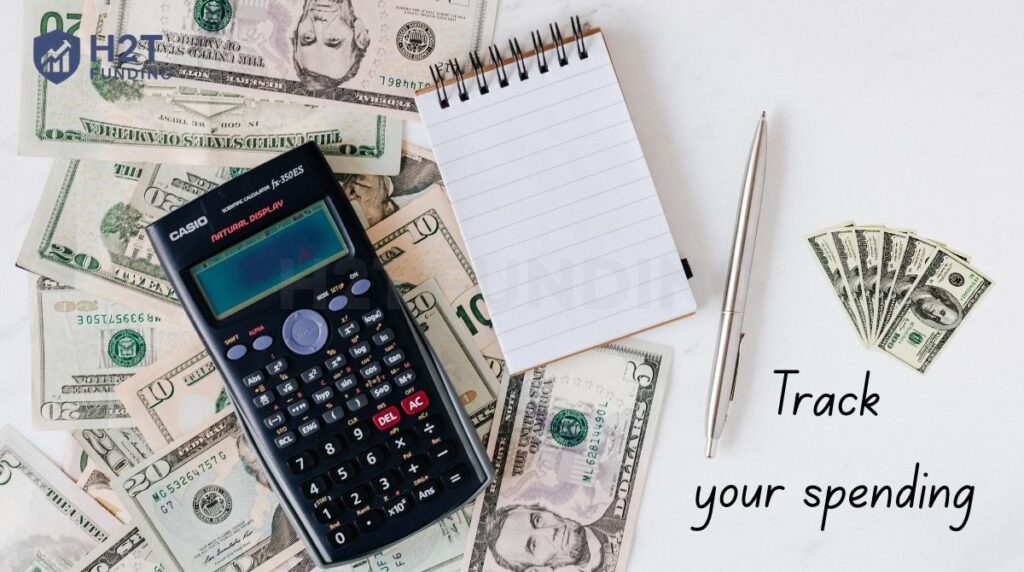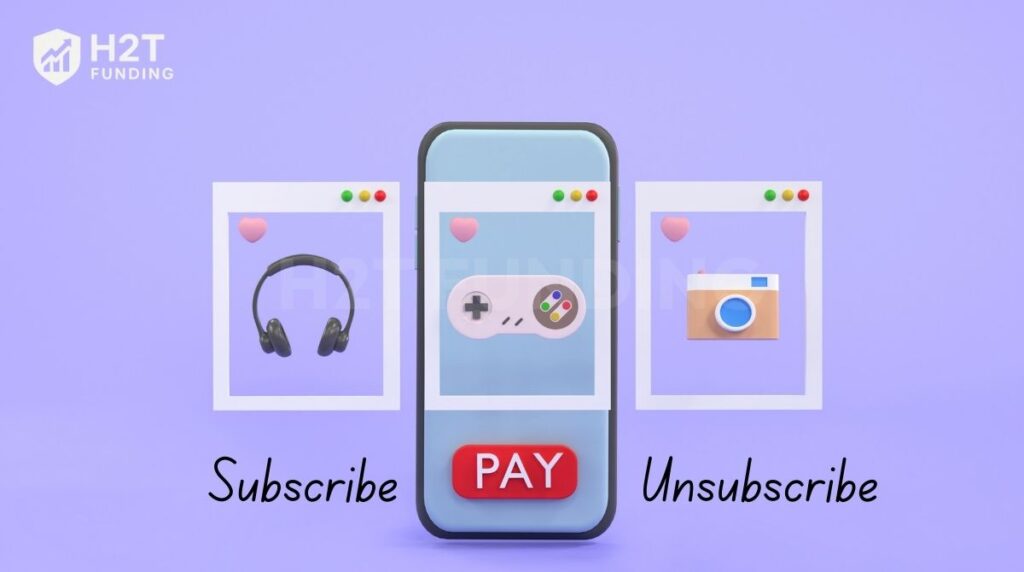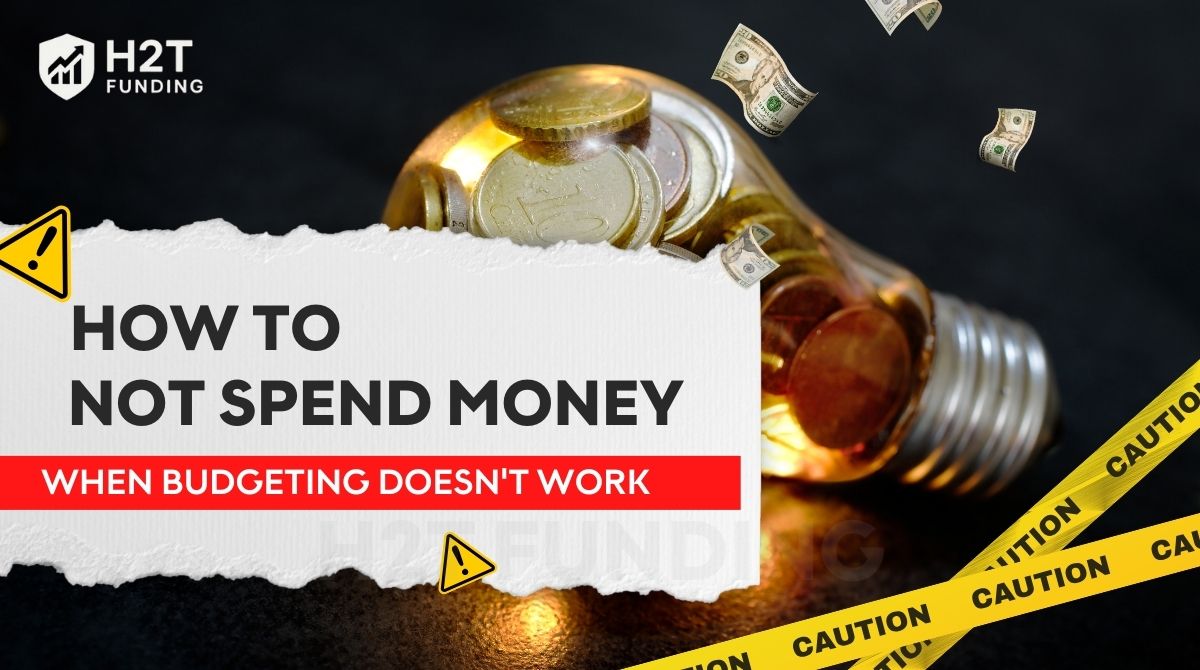Have you ever looked at your end-of-month statement and wondered, Where did all my money go? Or felt that sting of guilt after a quick shopping trip turned into a $100 expense? If you’re nodding along, you are not alone.
Overspending isn’t always a sign of poor discipline. The truth is, while a flexible budget is a powerful tool for clarity, the traditional, rigid methods are often too restrictive to keep up with the chaotic reality of life. So, instead of blaming yourself, let’s consider that the problem isn’t you; it’s the tool you’re using.
Here, you’ll learn how to not spend money when budgeting doesn’t work by shifting your mindset, identifying spending patterns, and building habits that align with your actual financial goals.
Key takeaways
- The budget fails because it is too rigid, guilt-driven, and unable to adapt to real-life spending patterns.
- Overspending happens not from lack of discipline, but from emotional and behavioral triggers that traditional budgeting ignores.
- Conscious spending, focusing on values, priorities, and intentional choices, is more effective than tracking every dollar.
- You can stop spending when budgeting doesn’t work by identifying triggers, connecting spending to long-term goals, and adding friction through delay rules or cash-only periods.
- Practical habits like reviewing subscriptions, planning meals, using no-spend days, and limiting access to cards help you control impulses quickly.
- Long-term success requires simplifying your system, automating savings, reducing temptations, and building an emergency fund to prevent backsliding.
1. Why did your budget fail?
Before you can answer the question of how to not spend money when budgeting doesn’t work, you first need to understand: Why did your budget fail?
Most budgeting advice assumes that people are rational, consistent, and emotionally detached from their money. In reality, human behavior doesn’t follow those rules.

According to a 2024 survey from Discover (Morning Consult), most Americans struggled to follow a budget. Nearly two-thirds, 64%, did not create a budget at all, while 14% made a budget but failed to stick to it. Only 22% successfully created a budget and followed it consistently.
The two main causes of traditional budgeting’s frequent failure are as follows:
- It creates a restrictive mindset that leads to burnout: Traditional budgets focus on what you can’t do, leading to guilt over every non-essential purchase. Like a strict diet, this restriction ignores the emotional triggers behind your spending and often leads to financial binges when willpower runs out.
- It’s too rigid for the natural ups and downs of real life: A flat-line budget struggles with realities like fluctuating income, unexpected expenses for your emergency fund, and a digital environment designed for one-click purchases. A budget can show you your spending habits, but it can’t, by itself, solve the emotional reasons you overspend.
I have a friend, Sarah, who’s a freelance graphic designer. She used to complain to me that her detailed monthly budget would always implode by the third week. The problem wasn’t her, but the fact that a single delayed client payment or an unexpected vet bill was enough to derail the whole plan.
The moment she realized the issue wasn’t her willpower but the rigidity of the budget itself, that was her turning point.
Don’t miss out:
2. The alternative: Embrace conscious spending
When traditional budgeting fails, the solution isn’t to abandon money management; it’s to shift your focus from tracking numbers to understanding behavior. This is the core of conscious spending, which means making sure every dollar you spend aligns with your values and priorities.
For practical strategies, check out the best budget tips for young families.
Rather than asking yourself, Where can I cut back?, start asking, Does this expense genuinely add value to my life?. This shift moves you away from guilt-based budgeting and toward intentional financial choices.
You can also learn how to start a budget when it’s too late to regain control over your finances.
Conscious spending empowers you to redirect money away from impulsive, low-value purchases and toward the things that truly matter, whether that’s debt freedom, meaningful experiences, or long-term security.
3. How to not spend money: Your new plan when budgeting fails
When traditional budgeting doesn’t work, shift the focus from numbers to behavior. Build habits that naturally reduce unnecessary spending and support long-term financial resilience. For those wondering how to stop spending money, start with these steps:
- Identify your spending triggers
- Connect daily spending to long-term goals
- Implement a 48-hour delay for non-essential purchases
- Automate your savings with pay yourself first
- Unsubscribe from temptation
- Seeking professional help
These steps help you make intentional choices and regain control over your money. Consider reviewing what’s included in the personal care section of a budget to identify hidden spending. Learn more in our detailed guide.
3.1. Start by identifying your spending triggers
Understanding what motivates your spending is necessary before you can manage it. Many purchases aren’t logical; they’re emotional or situational reactions made automatically.

Spending triggers are the emotions, situations, or habits that make you make impulsive purchases. The first step to control is to become conscious of them.
Common triggers include:
- Emotions: Shopping when you’re stressed, bored, or seeking a reward.
- Situations: Visiting online stores while tired or hungry.
- Digital exposure: Instagram ads or TikTok hauls create FOMO (fear of missing out).
- Social pressure: Buying just to match what others are doing or wearing.
For the next seven days, become your own financial detective. Track not just what you spend, but the why behind it. Write down the moment, the mood, and the context.
Do you find yourself online shopping on a Friday night after a stressful week? Or do you tend to order takeout when you’re feeling tired? Naming these patterns is the first step to replacing them with better choices, like taking a walk or journaling. The key is awareness, not restriction.
You can also explore how to make a monthly budget to gain better control over your spending patterns.
3.2. Connect today’s spending to tomorrow’s goals
A common cause of impulsive spending is the need for immediate satisfaction. To counter this, make your long-term goals emotionally visible and tangible.
Instead of vaguely saving for travel, visualize the trip: set your phone wallpaper to the Amalfi Coast or Kyoto in spring. When tempted by a non-essential purchase, ask: Is this worth delaying that experience?
This simple mental shift helps reframe daily decisions. You’re not saying no to a $60 pair of shoes; you’re saying yes to the plane ticket that matters more.
For major life goals, check the optimal budget to buy a house by 30 for actionable guidance.
3.3. Implement a 48-hour spending delay rule
Impulse purchases are often driven by emotion, not need. The 48-hour rule introduces a buffer between the urge to buy and the actual transaction.

For any non-essential item over a set threshold, such as $50, add it to your cart, but delay the purchase for 48 hours. This pause gives your rational mind time to assess whether the item aligns with your priorities or is simply a reaction to short-term desire.
In most cases, the sense of urgency fades, and the decision becomes clearer. This simple tactic reduces buyer’s remorse and supports more intentional spending.
Maybe you need to know: Smart weekly budgeting tips every beginner should know
3.4. Automate your savings with pay yourself first
Save initially, rather than saving what’s left over after spending. This method is known as Pay Yourself First.
Set up an automatic savings transfer from your paycheck account to a savings or investment account on the day you get paid. By doing this, you remove the temptation to spend what should be saved. Your lifestyle naturally adjusts to the remaining balance.
This strategy is widely used in personal finance because of its simplicity and effectiveness. It takes discipline out of the equation by making saving the default, not a decision you have to make every month.
3.5. Unsubscribe from temptation
Constant exposure to sales, promotions, and limited-time offers fuels unnecessary spending. Removing the source of temptation is more effective than relying on self-control alone.

Take 10 minutes today to clean up your digital environment:
- Unsubscribe from retail newsletters.
- Mute or unfollow shopping-related accounts.
- Turn off push notifications from shopping apps.
This is reducing decision fatigue. Our brains can only make a limited number of good decisions each day. Every marketing email you see is another small decision that drains your mental energy, making you far more likely to give in to impulse spending later.
3.6. When to seek professional help
Sometimes, willpower and new habits aren’t enough. If your spending habits are causing severe consequences, it might be a sign of a deeper issue like compulsive buying behavior (oniomania) or underlying anxiety. It’s time to seek professional help from a therapist or financial planner if you recognize these signs:
- Unmanageable debt: Your credit card debt is growing faster than you can pay it off, and you’re using new loans to cover old ones.
- Intense negative emotions: You feel extreme anxiety, guilt, or shame about your spending, and often hide purchases from your loved ones.
- Loss of control: You’ve tried to stop multiple times but feel a compulsion to spend that you cannot control, especially when stressed or upset.
- Negative life impact: Your financial situation is causing significant strain on your relationships, work performance, or mental health.
Reaching out for help isn’t a sign of failure; it’s a courageous step toward taking back control and securing your long-term financial independence.
4. 10+ tips to help you stop spending
When your budget fails, the real challenge often lies in your habits, not your math. If you’re wondering how to not spend money when budgeting doesn’t work, let’s start with these key tips:
- Review and cancel unused subscriptions.
- Make spending less convenient.
- Plan your meals.
- Assign every dollar a purpose.
- Create a Guilt-Free Spending fund.
- Try no-spend days.
- Replace boredom with creativity, not consumption.
- Take a cash-only challenge.
- Use a wallet reminder.
- Think in work hours, not price tags.
- Only carry what you intend to spend.
Follow these steps to take control of your spending and prepare for the detailed tips below.
4.1. Review and cancel unused subscriptions
Check your bank or credit card statements for recurring payments you’ve forgotten about. Unused gym memberships, streaming platforms, or premium apps can quietly drain your finances. Cancel what you don’t need, and if you rarely use it, reconsider its value.
4.2. Make spending less convenient
Delete saved cards from online stores and turn off push notifications from shopping or food delivery apps. The more friction in your spending process, the more time you have to pause and rethink the purchase.
4.3. Plan your meals ahead
Food is a common budget-buster, especially when you eat out or order in. Make a weekly meal plan, shop with a list, and prep your meals at home. You’ll not only save money but also reduce stress around daily food decisions.

4.4. Assign every dollar a purpose
Even if a detailed budget hasn’t worked for you, a simplified system can help. Split your income into categories, like savings, essentials, and flexible spending. This helps you avoid mindless purchases and ensures your money works toward your goals.
Read further related articles: How to improve your personal cash flow: A practical guide to managing money better
4.5. Create a guilt-free spending fund
It sounds counterintuitive, but setting aside a small, specific amount of money each month for yourself can actually help your financial plan. Use it to spend on whatever you want, like a fancy coffee, a book, or a small gadget. It prevents feelings of deprivation, which reduces the risk of a binge-spending blowout from feeling too restricted.
This strategy directly counters the psychological trap of a scarcity mindset. When your brain feels completely restricted, it’s more likely to trigger a binge-spending cycle as a form of rebellion, much like a crash diet often leads to overeating. This fund permits you to be human, making your overall plan more sustainable.
4.6. Try no-spend days
If you’re searching for how to not spend money for a week or how to stop spending money for 30 days, a no-spend challenge is a simple way to reset your habits. Designate one or two days per week when you spend nothing outside of necessities. No quick stops at the store, no online browsing, no vending machine snacks. These reset days build discipline and break the cycle of unconscious spending.
4.7. Find your go-to free entertainment
A huge trigger for mindless spending is simply boredom. Instead of defaulting to online shopping or expensive outings, build a list of go-to free or low-cost activities. Having these ideas ready removes the friction of what to do when boredom strikes.
Here are a few ideas to get you started:
- Explore your local library for books, movies, and free events.
- Visit local parks, hiking trails, or have a picnic.
- Host a potluck or movie night at home with friends.
- Search for free community events, concerts, or workshops happening in your area.
- Start a new creative project using materials you already own.
4.8. Try the envelope system
The envelope system is a classic, hands-on method to control overspending in problem categories. Instead of just using cash, you physically divide your cash for variable expenses into labeled envelopes at the start of the month.

For example, create envelopes for Groceries, Dining Out, Gas, and Entertainment. You fund them based on your spending plan. The rule is simple: when an envelope is empty, you stop spending in that category until the next month. This system creates a hard, physical limit that a debit card swipe can’t replicate, forcing you to make conscious trade-offs with your spending.
4.9. Use a wallet reminder
Place a sticky note or a small card in your wallet with your top financial goal written on it. Each time you reach for your card or cash, you’ll be reminded of what matters most, and that can be enough to stop an unplanned purchase.
4.10. Think in work hours, not price tags
Instead of seeing a $75 pair of shoes, think: That’s six hours of work after taxes. Translating spending into time creates emotional friction that discourages impulse purchases and sharpens your sense of value.
4.11. Only carry what you intend to spend
Leave your credit and debit cards at home when you go out. Bring only the amount of cash you’re willing to spend. This physical boundary makes overspending much harder and helps you stick to your original plan.
4.12. Find an accountability partner
Changing your spending habits is difficult when you’re doing it alone. Sharing your goals with someone you trust, a friend, partner, or family member, can make the process much easier. When you know someone is supporting you and keeping you accountable, you’re far more likely to stay committed and follow through.
By identifying triggers, creating mental friction, and setting purposeful limits, you can break the cycle of impulsive spending. These practical strategies guide you toward mindful financial habits, helping you save money and focus on what truly matters.
Discover more related articles:
5. Common spending pitfalls to avoid
Do you ever feel like your money just vanishes by the end of the month? Often, the issue isn’t one big mistake, but a few small leaks in our financial boat. Identifying these common pitfalls is the first step toward better money management.
Here are some of the most frequent traps that can derail your financial plans:
- Mindless overspending and impulsive purchases: This happens when we shop out of habit or emotion instead of need. Practicing conscious spending, by asking if a purchase aligns with your values, helps you stay in control of your money and focus on your financial priorities.
- Letting your lifestyle inflate with your income: It’s tempting to upgrade your car or apartment after a raise. But if your spending grows just as fast as your paycheck, you’ll never get ahead on your long-term financial goals or build real wealth.
- Ignoring the small, recurring expenses: A few subscriptions here, a daily coffee there, they seem harmless alone. But these small leaks, often called subscription creep, can add up to a significant amount and quietly drain your budget each month.
- Relying on credit to fund your daily life: Using credit cards to cover the gap between your paycheck and expenses is a dangerous cycle. High interest rates can trap you in a difficult financial situation, making financial independence feel impossible to reach.
- Not having an emergency fund: Life is unpredictable, and one unexpected event can create a crisis if you’re unprepared. Without an emergency fund, you’re often forced into debt when a car repair or medical bill suddenly appears.
In the end, avoiding these pitfalls isn’t about restriction; it’s about awareness. When you know where the traps are, you can navigate around them. This builds a stronger foundation for your finances and helps you move confidently toward your financial goals.
6. Quick tips to stop spending immediately
I’ve had those weeks where it felt like my money was slipping through my fingers. Over time, I’ve learned that regaining control doesn’t require a massive financial overhaul overnight. Instead, it starts with a few simple, powerful actions to consciously hit the pause button on your spending.
Here are some practical tips that can help you rein in your spending right now:
- Create intentional friction before you buy: The easiest way to stop impulse buys is to make them harder to do. A trick I use is the 24-hour pause for any non-essential purchase. I also regularly delete saved credit card details from online stores and unsubscribe from tempting marketing emails. This small bit of friction forces a moment of conscious spending.
- Plan your food expenses for the week: Food is one of the biggest variable expenses for most people. Taking 20 minutes to plan your meals for the week and creating a strict shopping list is a game-changer. It helps you avoid both impulse buys at the grocery store and the temptation to order expensive takeout after a long day.
- Conduct a 15-minute subscription audit: Go through your bank statement and find every recurring payment for services you barely use. Canceling just two or three subscriptions can free up a surprising amount of your income each month. It’s one of the fastest ways to cut your monthly expenses without feeling any real sacrifice.
- Start a no-spend challenge: This is my favorite way to hit the reset button. Choose a specific period, a weekend, or even just three days this week, and challenge yourself to spend zero money on non-essentials. This isn’t about punishment; it’s an exercise that reveals your spending triggers and helps you appreciate what you already have.
- Switch to a cash-only system for a week: Leave your credit cards at home and use only cash for your daily variable spending (like coffee or lunch). When you physically see the money leaving your hands, it creates a powerful psychological connection to your spending habits that a simple tap of a card just can’t replicate.
These tactics aren’t meant to be forever rules, but tools to break your autopilot spending habits. They give you the space you need for better money management. This helps you direct your money toward real financial goals, such as becoming debt-free or building a secure future.
7. FAQs on how to not spend money when budgeting doesn’t work
Start by applying the 48-hour delay rule to create distance between impulse and action. At the same time, connect your daily spending to long-term goals. Ask yourself: Does this purchase align with what truly matters to me? If it doesn’t, let it go.
Identify your personal spending triggers, emotions, environments, or habits that lead to impulse buying. Then, reduce exposure: unsubscribe from promotional emails and mute shopping notifications. Prevention is more effective than self-control alone.
Adopt the pay yourself first method: automate savings immediately upon receiving income. This forces you to budget with what’s left and helps avoid overspending. Over time, this approach builds discipline without relying on willpower.
To avoid spending over budget, track your expenses regularly and set clear spending limits for each category. Use cash or a budgeting app to stay accountable. Prioritize needs over wants, and review your budget weekly to make timely adjustments.
Your budget is likely failing because it’s too rigid and doesn’t match your actual life. A successful budget must be flexible enough to handle unexpected expenses and adapt to your real spending habits, not based on an ideal.
Ditch the detailed budget and simplify. Use the pay yourself first method by automating your savings immediately after you receive your income. This strategy focuses on your savings goals first, giving you more flexibility with the remaining money and reducing the stress of tracking every single expense.
The fastest way is a short-term spending freeze or a no-spend challenge for a few days. This action breaks your autopilot habits, makes you hyper-aware of your spending triggers, and forces you to find free alternatives for entertainment or convenience.
No, not by themselves. Think of a no-spend challenge as a powerful diagnostic tool, not a long-term cure. Its true value is in revealing your hidden spending habits and triggers. For long-term success, you must apply these insights to build a more sustainable financial plan.
Combine two key strategies. First, increase friction by adding a 24-hour waiting period before any non-essential purchase. Second, strengthen your why by keeping your main financial goal visible (like on a sticky note on your monitor). This makes the long-term reward feel more immediate than the short-term impulse.
It’s a simple budgeting framework for your after-tax income. You allocate 70% to all living expenses and wants, 20% to savings, and the remaining 10% to paying off debt or investing. Its purpose is to ensure you are saving and investing consistently without complex tracking.
It is a simple rule to curb impulse spending. For any non-essential purchase, you must wait 7 days before buying it. This cooling-off period helps you differentiate between a fleeting want and a genuine need, saving you from many regrettable purchases.
Because it was likely created for a fantasy version of yourself, not your real self. A budget that ignores your past spending history or doesn’t allow for any flexibility is set up to fail. A good budget must be realistic and adaptable from day one.
8. Conclusion
So, don’t treat a failed budget as a personal failure. See it as a sign you need a smarter, more flexible strategy, one that works with your human nature, not against it. Learning how to not spend money when budgeting doesn’t work is about understanding yourself.
When you shift from rigid rules to intentional habits, you’re not just controlling your money; you’re building a healthier relationship with it. This journey isn’t about being perfect; it’s about making progress.
While a goal like figuring out how to not spend money for a year might seem extreme, the principles are the same: start small, build awareness, and align your spending with what truly matters. Start today.
For more practical frameworks and behavior-based strategies, explore other insights in the Budgeting Strategies section at H2T Funding.





